SSD RAID: Do You Want A Cheap Array Or One Larger Drive?
You're on a budget. You want to know if it'd be better to stripe a couple of smaller SSDs or simply buy one larger performance-oriented drive. Today we're comparing one, two, and four 30 GB Kingston SSDNow V drives to Zalman’s new 128 GB N-series SSD.
Benchmark Results: Access Time And I/O Performance
Access Time
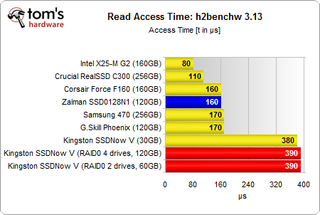
Although access time is not very relevant on SSDs due to the already high level of performance, the Kingston SSDNow V 30 GB and the two RAID setups require considerably more time to access data than the Zalman drive and the other SSDs.
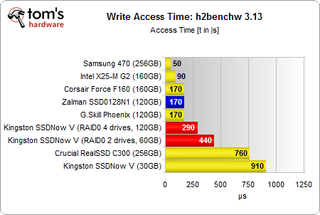
The same applies to write performance, although the RAID arrays do much better here.
I/O Performance
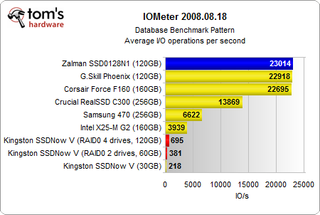
We knew that the Kingston SSDNow V 30 GB would be particularly weak in I/O operations, but that doesn’t really matter much in the context of an enthusiast PC. I/O performance only matters for application scenarios with lots of concurrent activity, but it should not be decisive in your desktop PC. The Kingston array reaches three times the I/O performance of an individual drive, but Zalman’s new N-series SSD is another 33x faster.
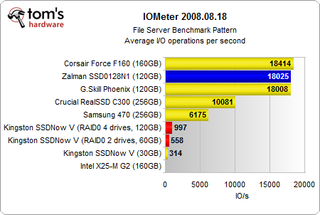
The difference in file server performance is much smaller, but still significant.
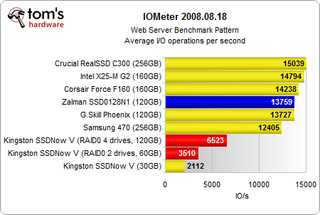
Web server testing does not involve write activity, which is why the Kingston drive and the RAID array do much better. Still, a single SandForce SSD, such as the Zalman N-series, is many times faster.
Stay On the Cutting Edge: Get the Tom's Hardware Newsletter
Get Tom's Hardware's best news and in-depth reviews, straight to your inbox.
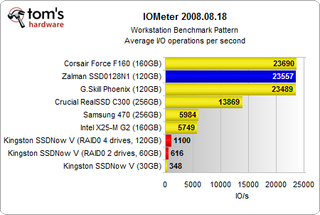
Current page: Benchmark Results: Access Time And I/O Performance
Prev Page Test Setup Next Page Benchmark Results: Throughput, IOMeter Streaming, CrystalDiskMark